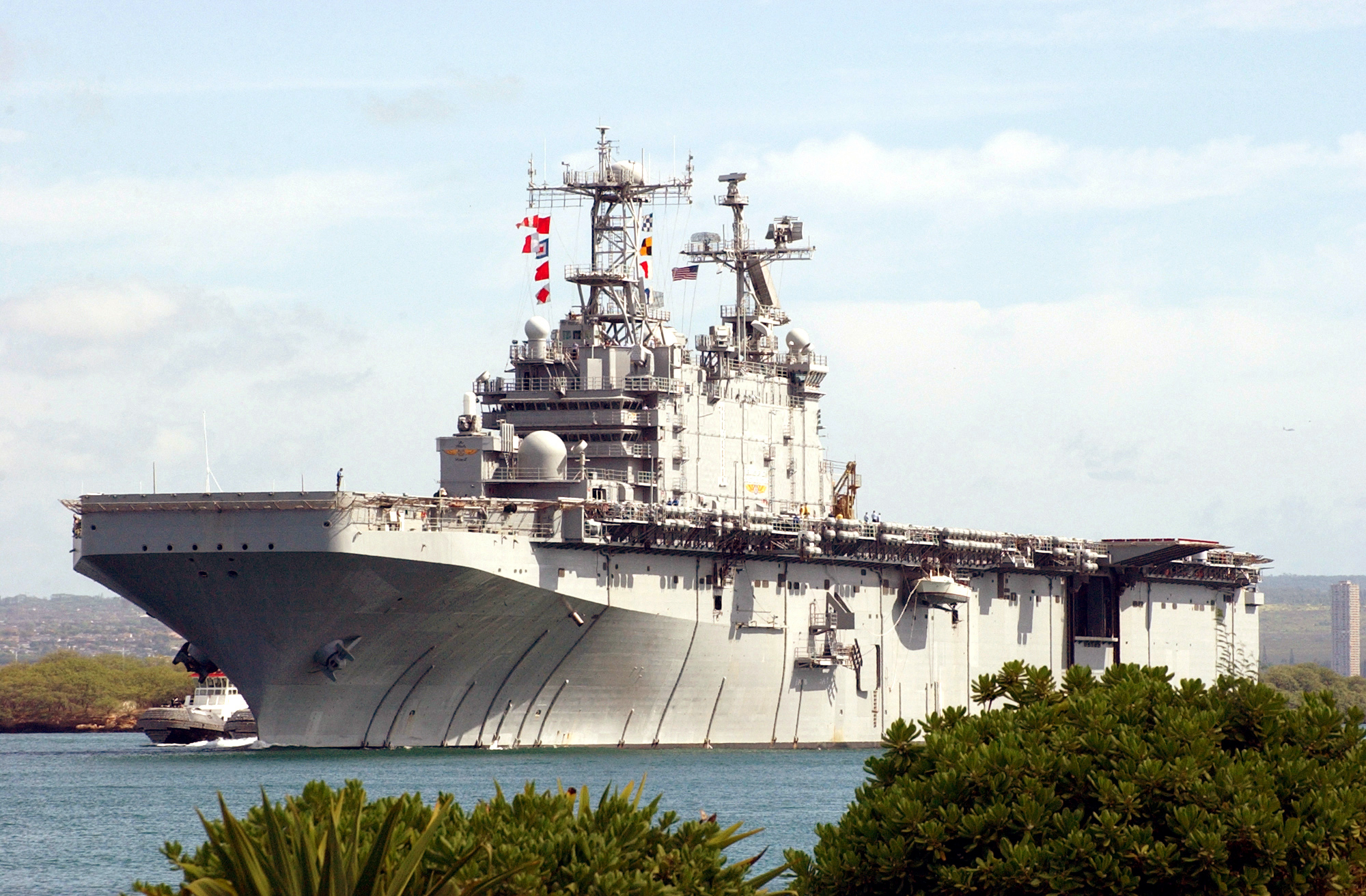The United States military is set to sink the decommissioned amphibious assault ship ex-USS Tarawa during the upcoming 2024 Rim of the Pacific (RIMPAC) exercise, which will be held from June 26 to August 2 near Hawaii. The exercise represents one of the largest naval drills in the world and involves various multinational naval forces.
The ex-USS Tarawa, which was in service from 1976 until its decommissioning in 2009, reportedly arrived at Ford Island two weeks ago for stripping and preparation to serve as a “live target” off the coast of Hawaii. SINKEX (sink exercise) is characteristic of each RIMPAC iteration, showcasing live-fire drills and tactical training.
This year’s exercise marks a significant milestone. It is the first time in nearly 20 years that a Tarawa-class vessel will be used as a target. The previous instance was in 2006, when the ex-USS Belleau Wood was sunk.
Additionally, this will be the first amphibious assault ship of any class to be sunk in over a decade since the ex-USS New Orleans was sent to the ocean floor during the 2010 RIMPAC.
Such exercises aim to provide crucial data on the effectiveness of various weapons against large warships and evaluate the ship’s durability under extreme conditions. The specific weaponry for this year’s SINKEX remains undisclosed.
Former USS Tarawa (LHA-1) was towed to Ford Island two weeks ago to stripped down and prepped for RIMPAC 2024 and to be used as a “live target” off the cost of Oahu this year. Check on her @MarcoNaron @navyboy68 @TrompZrms @Crew_ZrMs_Tromp !! pic.twitter.com/3C8Ivh4wKK
— Stiofán Sopelza (@sopelza) June 9, 2024
The exercise occurs amid rising concerns about potential conflicts in the Indo-Pacific region, particularly involving the United States and China.
The Chinese People’s Liberation Army Navy (PLAN) has been rapidly expanding its fleet of amphibious assault ships, making them key targets in future conflicts.
The PLAN’s growing fleet includes the Yuzhao-class Type 071 and the Yushen-class Type 075 ships, the latter of which is comparable in size and design to the US Navy’s Wasp-class and the retired Tarawa-class.
Currently, the PLAN has three Type 075s in service and a fourth under construction. These vessels can carry numerous landing craft, troops, armored vehicles, and helicopters and serve as command centers during assaults.
The planned sinking of the Tarawa at RIMPAC 2024 will also help to highlight the potential vulnerability of large US warships in future conflicts, particularly given China’s development of advanced anti-ship missiles.
These missiles pose a significant threat to US Navy vessels in any conflict, especially one concerning Taiwan.
The sinking of such large vessels will also serve as a stark reminder of the potential human cost in such conflicts, with thousands of crew members and personnel on these large warships being irreplaceable in the short term.
USS Tarawa (LHA-1)
Commissioned on May 29, 1976, in Pascagoula, Mississippi, the amphibious assault ship USS Tarawa was named after the Battle of Tarawa, fought in the Pacific from November 20-23, 1943, during World War II.
As the lead ship of her class, Tarawa was the first amphibious assault ship designed to combine the roles of four previous types: the amphibious assault ship (LPH), amphibious transport dock (LPD), amphibious cargo ship (LKA), and dock landing ship (LSD).
After relocating to the West Coast, Tarawa embarked on numerous Pacific cruises. In January 1991, as part of the multinational force during Operation Desert Shield, the ship deployed U.S. Marines to Saudi Arabia to support the operation.
During that decade, Tarawa was frequently deployed to the Pacific. She was en route to the Persian Gulf when the USS Cole (DDG-67) was attacked in Yemen, assisting the damaged destroyer on its return journey.
Following the terrorist attacks on September 11, 2001, Tarawa was tasked with supporting Operation Iraqi Freedom in the Middle East.

From mid-2005 to early 2006, Tarawa supported Operation Iraqi Freedom and participated in a multinational training exercise, Operation Bright Star, in Egypt, transporting the 13th Marine Expeditionary Unit.
During this deployment, she visited ports in Darwin, Australia, Dubai, UAE, Bahrain, Singapore, and Hong Kong.
Tarawa was later redeployed to Bangladesh for Cyclone Sidr relief efforts alongside USS Kearsarge (LHD-3) as part of the “Operation Sea Angel II” mission,” an acknowledgment of her prior support to Bangladesh in 1991. This humanitarian mission contributed to her receiving the 2007 Battle Efficiency Award.
Her final deployment, from November 7, 2007, to June 8, 2008, saw Tarawa support the 11th Marine Expeditionary Unit in the Middle East for Operation Iraqi Freedom and Enduring Freedom.
She visited Bangladesh for tsunami aid, Singapore, Bahrain, UAE, Djibouti, Australia (Perth and Hobart), and Hawaii before returning to her home port in San Diego, concluding a seven-month mission.
USS Tarawa’s last deployment involved aiding ongoing US missions in Iraq and Afghanistan before she was decommissioned in 2009.
- Contact the author at ashishmichel(at)gmail.com
- Follow EurAsian Times on Google News




